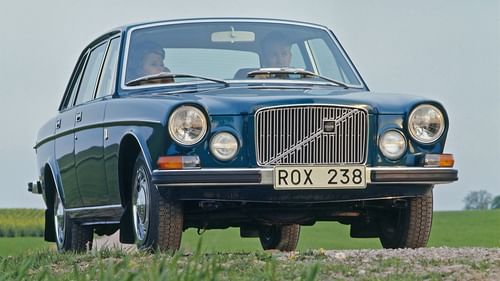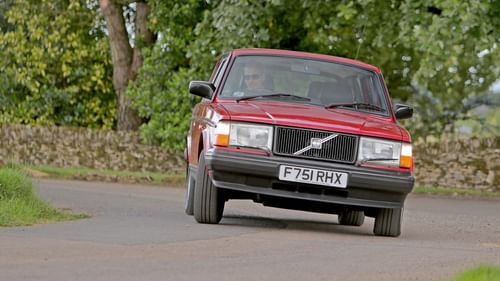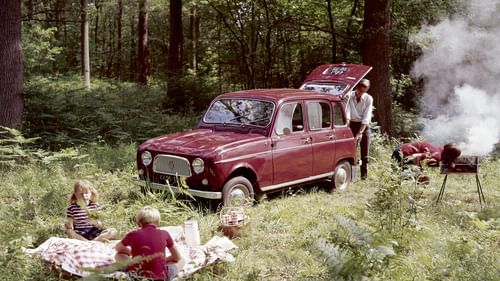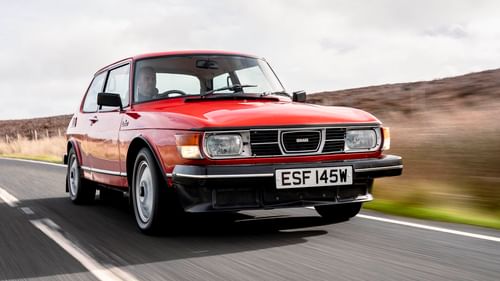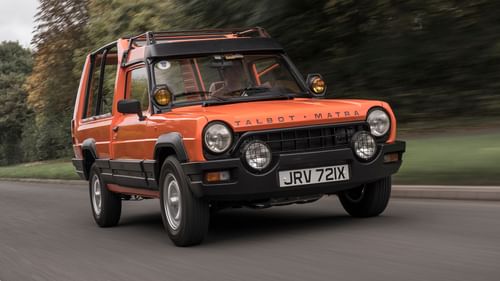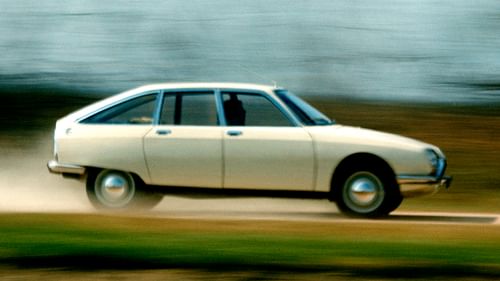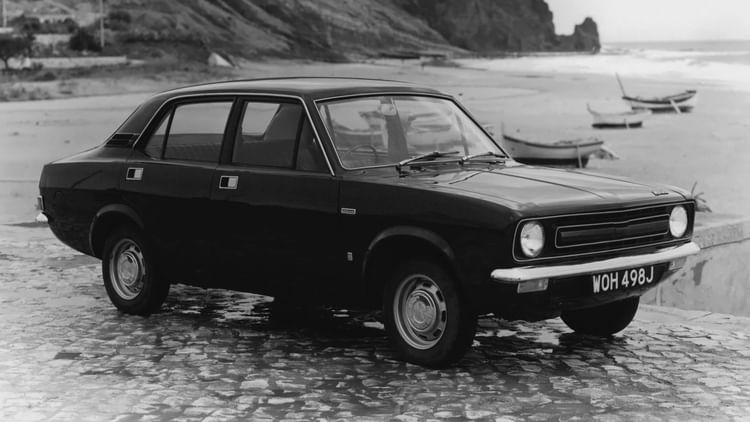
Monaco, Machete and Maori. Three of the proposed names on the British Leyland Motor Corporation (BLMC) boardroom table, before the chaps with enviable sideburns and thick-rimmed glasses settled on Morris Marina. With the benefit of hindsight, maybe Mediocre, Middling or Moderate would have been more appropriate.
The Marina couldn’t have been more middle-of-the-road if it had been painted white and intersected with Reflecting Roadstuds. BLMC bosses had one eye on speed of development and the other on cost as it rushed ADO 28 into production, keen to get a ‘Cortina killer’ to market by the 1970 Earls Court Motor Show. This was in 1968, soon after BMC and Leyland Motors had merged to create BLMC. The executive committee was surprised to discover that, aside from the proposed Mini replacement, there were no new models in the cocktail cabinet. Worse still, BL was powerless to prevent Ford from shaking up the Escort and Cortina segments, both of which showed huge potential for growth in the 1970s, especially in fleet circles. The Morris Machete? BLMC was armed with little more than a chip fork. To add salt to the wounds, the team had no more than two-and-a-half years to create a ‘Morris Cortina’. BLMC missed the original deadline, with the Marina being unveiled to the press in Cannes in April 1971.
This is the point at which we should launch an assault on the much-maligned Marina, peppering it with a volley of low blows and kicks to the shin. Much has been written about the car’s shortcomings, to the point that it’s become the symbol for everything that was wrong with the British car industry. It’s a wonder Corgi hasn’t produced a Marina diorama, complete with brazier and a miserable chap in a donkey jacket. Petrolblog isn’t here to jump on the Marina from a great height (no clichés about pianos, please); the world doesn’t need another ‘OMG THE MARINA WAS LIKE SO BAD’ story. Equally, it’s not about to don a pair of rose-tinted NHS spectacles to present the Marina as a misunderstood and underappreciated gem. Instead, here are some reasons to give the Marina a break.

It was only a stop-gap
The development team knew that the Marina was never intended to be anything other than a stop-gap. Work on its replacement, under the project name of ADO 77, began soon after the Marina’s launch, with a view to putting it on sale in 1976. It was to be bigger than the Marina, with BLMC caught off-guard by Ford’s decision to supersize the Cortina in 1970. The most radical aspect of the project was the proposed platform-sharing of cars within the BL stable, something we take for granted in 2021. It meant that the Marina would sit on the same platform as the MGB and Midget, lowering development costs and streamlining production.
It wasn’t to be. Money was the reason why the Marina remained on the shelf long after its sell-by date. Bankruptcy, nationalisation and the creation of British Leyland meant that the Marina would have to soldier on until 1980, when it was replaced by the Harris Mann-designed Morris Ital. In effect, the Marina lived on until the Ital’s demise in 1984, although it’s worth noting that the Morris Ital remerged as a Chinese-market pick-up and van at the end of the 1990s. In every respect, that seems a long way from a cigar smoke-filled boardroom in the West Midlands.

Better than the sum of its parts
Without wishing to damn it with faint praise, the Marina was pretty good for a parts bin special. It’s even more impressive when you consider the vintage of some of the components. The design of the front suspension was almost identical to the Morris Minor 1000, with the rear live axle suspended by leaf springs. The 1.3-litre A-series and 1.8-litre B-series engines dated back to the 1950s, while the absence of synchromesh on the Minor’s gearbox resulted in the use of the ‘box from the Triumph 1300.
‘It would be very wrong to judge the Morris Marina on a purely engineering basis. From this point of view, it is frankly disappointing,’ said Jeff Daniels writing for Autocar 1971. He was prepared to forgive its shortcomings because ‘it was what British Leyland wanted, and they wanted it quickly’. In the same issue, Autocar described the Marina as ‘a kind of grown-up Morris Marina replacement, bigger and with the same kind of conventional layout.’ Fine, until you remember that the Minor stemmed from the 1940s. Still, we’re trying to give the Marina a day off from piano hurling.

Sales were actually pretty good
Only three cars outsold the Marina in the 1970s: Ford Cortina, Ford Escort and Mini. It ranked second behind the Cortina in 1973, with Morris shifting 115,041 Marinas, compared with 181,616 Cortinas. Let’s remember, the Marina was designed to take on the Cortina Mk2, but found itself lost in the middle ground between the Escort and the larger Cortina Mk3. It’s hard to land a punch when the opposition doesn’t stop moving.
Credit must be given to the publicity drive led by Filmer Paradise, who said: ‘The car will move on plan to the head of the United Kingdom sales league’. Well, head of the also-rans, which is no mean feat. Morris convinced 703,686 UK and 431,657 overseas buyers to part with their cash, so the Marina must be viewed as a success for BL, if not the British car industry. Just think what could have been achieved with more time and without the usual BL shortcuts.

More than just a saloon
It’s easy to knock the Marina’s styling. An utterly conventional four-door saloon, totally devoid of glamour and very much of its time. According to the excellent AROnline, chief stylist Roy Haynes said: ‘Any attempt to create an image radically different from the competition will destroy the opportunities which can be created to effect an immediate transfer of loyalty from the competitive brands.’ The ad team was leaning against an open door when it asked: ‘What happens when the best engineers in the world set out to create a beautiful car?’, but was the styling any better or worse than its contemporary rivals? Acceptable in 1971, but hopelessly dated by the middle of the decade. The revamped Marina 2 arrived in 1975, followed by a light facelift and the fitment of a 1.7-litre O-series engine in 1978, but it was beginning to look like a square box in a round hole. Or, to put it another way, a three-box saloon in a world defecting to two-box hatchbacks.
From the outset, Haynes was convinced a two-door coupé would be preferable to a two-door saloon. A kind of two-pronged attack on Ford, with the Marina going after the Cortina and the Capri. ‘Beauty with brains behind it’ might be a stretch, but the idea had some merit. The design was far from radical – from the front doors forward, the Marina Coupé was identical to the saloon – but the use of a slightly modified platform delivered significant cost savings. Indeed, the Coupé bucked the trend by being cheaper than the saloon, with the entry-level 1.3 De Luxe Coupé costing £923 ex-works. That’s £39 cheaper than the equivalent four-door saloon. Aside from the inconvenience of having to tilt the front seats forward to gain access to the back, the Coupé delivered few compromises over the saloon. It was a genuine four-seater, with more legroom and headroom than some saloons, along with a boot large enough for the weekly trip to Fine Fare. It’s just a shame that the engines and chassis couldn’t live to the muted promise of the fastback styling.
Then there was the Marina estate, described by Motor as ‘by far the best car in the range’. Unveiled at the end of 1972, the estate version was cheaper the Ford Cortina rival and more spacious than the admittedly more elegant Vauxhall Viva estate. The Marina estate couldn’t have been workmanlike – it’s a wonder it didn’t clock in and out when exiting and entering the driveway. An unashamedly conventional estate car for those who weren’t ready to embrace the Austin Maxi.
If a window cleaner or handyman of the 1970s wasn’t driving a Marina estate, he was probably at the wheel of a Marina van. Arriving hot on the heels of the estate, the 7cwt and 10cwt commercial variants were as much a part of British life as Carry On films and three-day weeks. Anyone with access to a Marina pick-up could live the caravan dream courtesy of Suntrekker. What better way to enjoy the hot summer of 1976 than in something that looked like it could have been built by the chaps from a television programme that shan’t be mentioned in the context of the Marina. The £3100 price tag included an unmodified 10cwt Marina pick-up, a Suntrekker unit with glazed rear door, water pump, jacking system, full-width double bed, a bunk for two children and a large dinette. The optional Electrolux refrigerator would have been a must-have accessory in ’76.
That’s not all, because Plymouth-based W. Mumford Limited offered a more convenient Marina Utility. Based on the 7 or 10cwt van, the car featured a folding rear seat, side windows, floor mats and headlining. The double-opening rear doors were retained, making it a cheaper and convenient alternative to the Marina estate. The Plymouth company is arguably best known in Marina circles for selling the topless variant. Designed and developed by Crayford, the rag-top Marina was built and sold by Mumford when it found it had an empty factory to fill. Based on the two-door Marina Coupé, the convertible featured a centre bridge, not unlike that found on the Triumph Stag. There were structural as well as safety reasons for its inclusion, but the appearance was far from elegant. ‘The Mumford Convertible will be the only British four-seater convertible offering a fixed roll over safety bar and wind up side windows front and rear,‘ claimed the West Country outfit.
As ably demonstrated by Brian Culcheth, the Marina also responded well to light tuning and modification. Oselli Engineering, Downton Engineering and University Motors were quick to realise the potential of the rear-wheel drive Marina, although it never threatened to progress anywhere beyond adequate. ‘Irrespective of any engine tweaks, the chassis does not lend itself to the simple improvements that can put so many modern saloons on a par with production sports cars,‘ was Motor’s rather honest appraisal in 1972. However, it did concede that the Marina could be turned ‘into a very acceptable compromise between a rorty sports saloon and the basic, plain Jane car as it comes from the factory‘.

Lasting legacy
We might be guilty of cutting the Marina a little too much slack – blame the bottle of Blue Nun we downed before penning this love letter. Was the Morris Marina the greatest saloon car of the 1970s? Obviously not. Does it deserve the tirade of abuse and death by online commenters? Not really.
Which begs the question: how should it be remembered? On the one hand, BLMC should be applauded for identifying a gap in the market and launching a car in just two years and 11 months. Sales remained buoyant and production topped a million, two factors that are often overlooked when people are putting together ‘worst car’ lists for the internet. Its success is especially impressive when you consider the vintage of its underpinnings.
On the other hand, these underpinnings were the Marina’s biggest problem. The rampant understeer experienced by Autocar and Motor magazines when driving the 1.8-litre version highlighted the risks associated with rushing a car into production. The issue was soon tamed, if not totally eradicated, although not before several thousand cars were recalled for a fix. Aside from the wayward handling, the Marina’s biggest crimes appear to be its simplicity and the fact that it outstayed its welcome.
There’s no doubt it could have better – the last-of-the-line Marinas prove that – but is there anything wrong with mainstream mediocrity? Given the speed of its development, the background of political and industrial turmoil, and its length of service, we think the Morris Marina deserves to come in from the cold. If not inside, how about a small gathering around the warmth of a brazier? You can bring the Watneys Party Seven.
This article first appeared in issue 2 of Classic.Retro.Modern. magazine.
